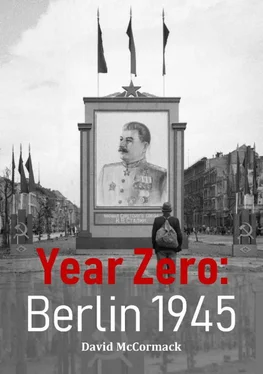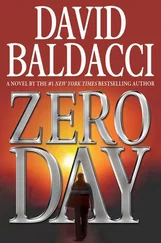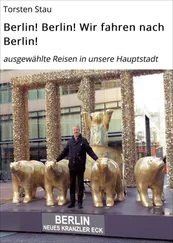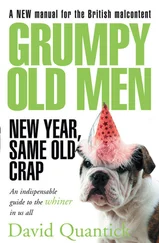The story of the ‘Blonde Poison’ is arguably one of the most intriguing and disturbing to come out of the Holocaust. It raises the question of just how far someone will go in order to survive. Stella went much further than most. To understand her motivation, we must go back to her childhood and adolescence in Berlin’s Westend. Stella was an only child, who was pampered and adored by parents who called her ‘Little Dot’. Whilst not quite living the life of a German-Jewish princess, she wanted for little, and was always well dressed. As a child she didn’t define herself as Jewish as she lived in a secular, fully-assimilated household. Her first inkling that she was ‘different’ came following the promulgation of the Nuremberg Laws in 1935. These laws effectively excluded Jews from civic life. Stella, along with thousands of other German-Jewish children was forced out of public school.
Life at the Jewish ‘Goldschmidt School’ opened up all sorts of new possibilities for Stella. It was here that she blossomed into womanhood. The transformation from being an adored child to becoming an object of desire was not lost on this mercurial adolescent. Peter Wyden was a classmate who was in thrall to this sexually knowing and seductive young woman. In a 1992 biography he recalled Stella’s allure:
Stella, my Stella, was a survivor of a different sort. I had no way to guess her vulnerability when we were teenagers, for the frustrating truth about ‘decent’ girls of my sheltered Berlin youth was their apparent aloofness. They did not neck, they did not hold hands. The very word ‘sex’ was unspeakable between the sexes, which made Stella’s sex education briefings so daring. Even my liberated mother never discussed sex. She informed me of the so-called facts of life by leaving a volume of Kraft-Ebing on prominent display on our bookshelves at home. I did have eyes in my head, and when they glimpsed Stella in those very short ruffled black gym shorts and her tight, thin white top, I didn’t need Kraft-Ebing or other middlemen to make the connection with my body.
Although I had many chances to become chummy with the adored one, inexperience keep me from pressing the luck of proximity. On most days I rode to school up Kurfurstendamm on either the No. 76 or the No. 176 tram, always picking my departure time with deliberation. My objective was to board the car on which ‘my’ girls were riding. If I didn’t spot them, I would wait until their car came along.
For Peter, Stella remained an unobtainable object of fantasy. In February 1937, he sailed with his parents on the S.S. Washington bound for New York. He was one of the fortunate few to be granted asylum in America. Stella’s family were neither as wealthy, nor well connected, and as such their own attempts to find refuge ended in dismal failure.
The state sponsored pogrom known as ‘The Night of the Broken Glass’ in November 1938 further served to ratchet up the repressive measures against Berlin’s Jews. Following the closure of the Goldschmidt School, Stella attended the Feige-Strassburger school of fashion design. In reality, she did little actual fashion design. For the most part, she posed as a nude model. As a model, Stella found herself very much in demand. Men queued up to catch a glimpse of this vision who was, ‘tall, slim, leggy, cool, with her light blue eyes, teeth out of a toothpaste ad, and pale satin skin’. Stella’s looks were to be her salvation, and later partly responsible for her utter damnation.
In September 1941, the Nazi authorities decreed that no Jew could be seen in public without having a large yellow Star of David stitched to their left breast. It was expressly forbidden to cover up this identifying symbol in any way. A former classmate of Stella named Klaus Scheurenberg later recalled his reaction to wearing the star following his conscription to work at the Otto Kolshon factory in Niederschonhausen, ‘The star seemed as big as a plate and to weigh a ton’. Like many others he felt vulnerable and humiliated. ‘Fair game, fingered!’ about summed it up.
For Stella, the order to wear the star was particularly traumatic as she neither felt, nor looked Jewish. By now she had been conscripted for work as an ‘armaments Jew’ at the Siemens Elmo Works. For ten hours a day she toiled away in Section 133, grinding parts for electric motors. Her fellow workers regarded her as something of a square peg in a round hole, Margot Levy later stating that, ‘She wasn’t one of us’. Neither was Stella a part of the Communist inspired anti-Nazi resistance movement led by Herbert Baum. Politics held little fascination for this blonde bombshell.
That October, Stella married her boyfriend Manfred Kubler in a hurried ceremony at Wilmersdorf City Hall. After the ceremony, the newly-weds took the U-Bahn to visit Manfred’s father who was serving time in the Moabit Prison on trumped-up charges of black marketeering. For Stella, marriage legitimised her sexual relationship with Manfred. Whilst her new husband also resented his Jewishness, Stella went a step further by refusing to wear the star outside of working hours. There was some risk involved, but in reality, her Aryan appearance made her all but invisible. During those precious hours when she could hide her Jewishness, Stella felt liberated. She felt that she belonged in the ranks of those who were born lucky – German Gentiles.
On 27 February 1943, Adolf Eichmann’s assistant Alois Brunner launched the so-called Fabrikaktion (Factory Action). The operation was planed months before, with factory bosses being advised to prepare for the replacement of Jewish workers with foreign slave labour. Jewish worker Hildegard Henschel who was transported to Theresienstadt later recalled the ‘action’:
27 February began like any normal work day. The music hall at the nurses’ dormitory of the Jewish Hospital was empty. In every corner sat a doctor and two nurses with cases of medicine and supplies, waiting for what was to come… Between 9 and 10 am. the phones started ringing. Oranienburg Street reported that all community officials had been arrested at their work places… People were loaded onto SS trucks and brought to four assembly camps… Large teams of aides and medical staff were taken there… I just want to state that this action was executed with terrible cruelty and no human consideration. The people were quickly loaded onto the SS trucks. The women came straight from work, in their work clothes, with no coats, no breakfast… It was hard, almost impossible to find out where people were… There was absolute chaos everywhere.
One of those netted during the operation was Stella’s husband. He was taken from his place of work, transported to Auschwitz and subsequently murdered.
Stella was more fortunate. A warning from a gentile supervisor gave her time to think. By hanging back as the Jewish workers assembled downstairs, she was able to slip away and hide in the cellar. She then waited until the shift change before striding confidently past the sleepy guard who did not notice her incriminating identification card. Stella’s Aryan appearance had made her escape possible. The guard didn’t bother to properly examine her identification card because she was blonde, the perfect image of Nazi-German womanhood.
Stella became a U-Boat (a term used for a Jew living below the surface – illegally). During that early spring of 1943, approximately 18,300 Jews were somehow surviving in Berlin. Their situation had become ever more precarious since the February ‘action’. To increase their survival chances, they needed papers. Fortunately for Stella, she bumped into an old acquaintance from the Feige – Strassburger fashion school, Guenther Rogoff. His own key to survival had been in the utilisation of his considerable talents as a forger. Throwing caution to the wind, Rogoff blurted out his secret, ‘I forge documents for people. Maybe I can help you too’. Stella casually replied that his help would be very welcome. This chance encounter set into motion a chain of events that would lead to Stella’s ‘turning’ by the Gestapo. She was to become a prime asset, not least because Rogoff was a wanted man.
Читать дальше












